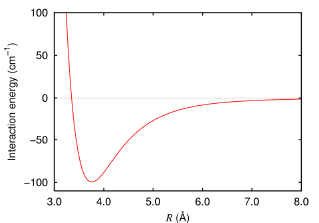The Strong
Interaction
The potential
electrostatic energy between two opposite charges distant of 1 Fermi is
1,44 MeV. The bounding energy between two baryons is about 8 MeV.
Considering that the distance between charges of quarks is never
inferior to 1 Fermi, Yukawa has suggested
that strong interaction is not an electromagnetic force (1935).
Furthermore
the intensity of this force decreases very fast with the distance
between nucleons. In this model, we postulate that charges are not
distant but in close contact. The bounding energy is the sum of the
electrostatic potential energy and the magnetic potential energy. The
profile of strong interaction seems to be like Van der Waals
interaction but with a level of energy much more high.
 |
 |
|
Van der Waals
interaction
(distance between atoms)
|
Energy level
of the strong interaction
(distance between cores)
|
 |
 |
|
Mesure of the
radius of nucleons by electron scattering
|
Radius of
nucleons and distance between cores
|